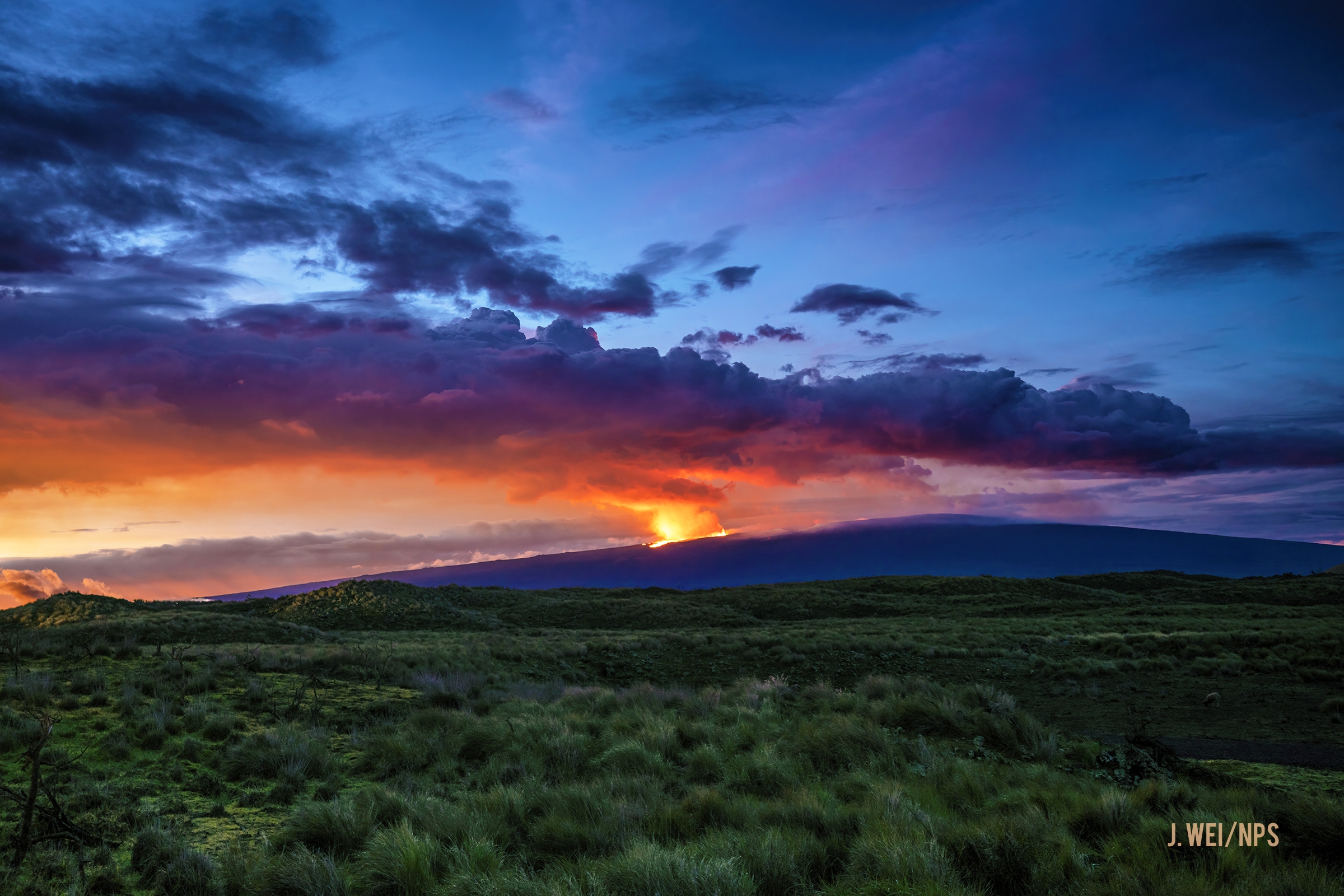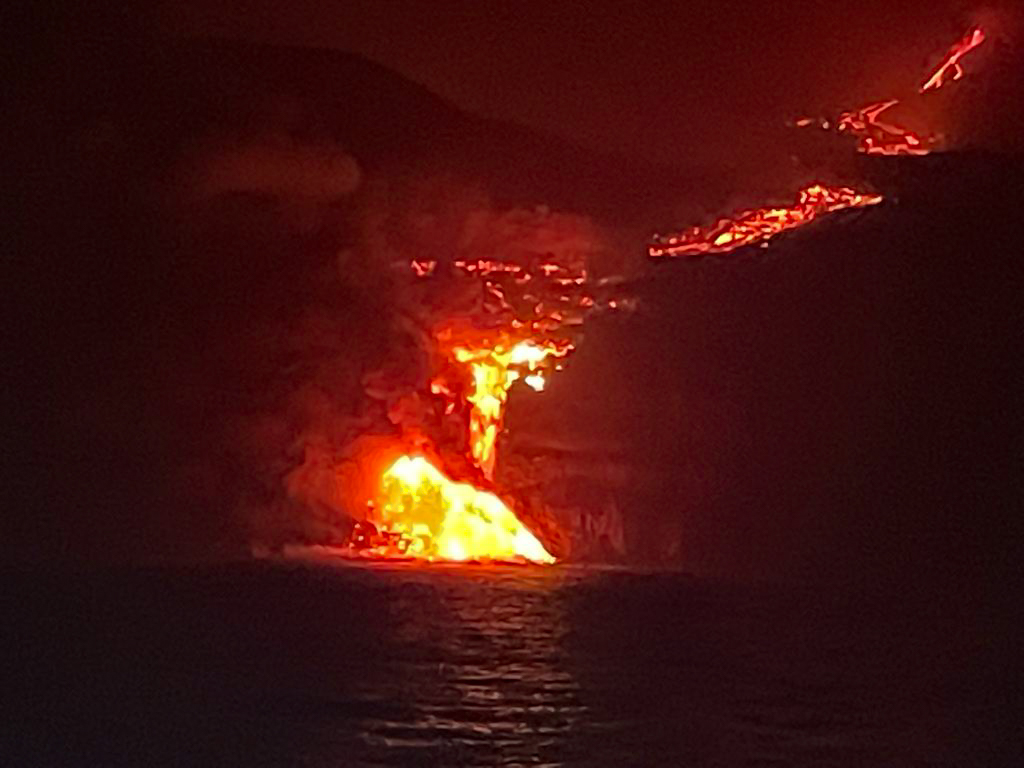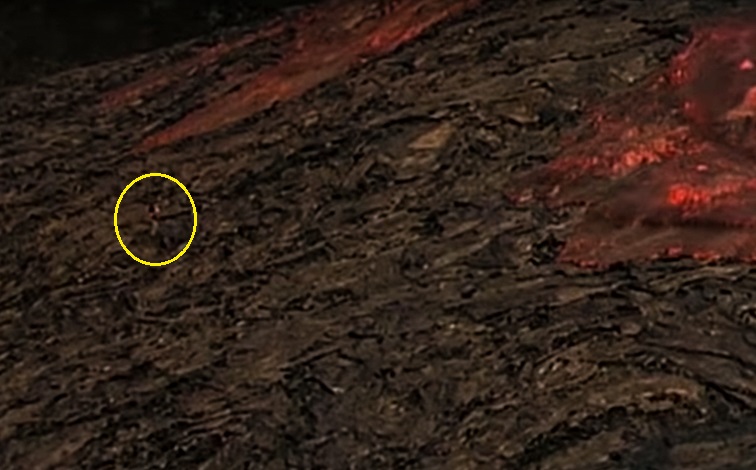Tag: hazards
Mauna Loa Erupts! What’s Next?

After a long period of unrest, Mauna Loa volcano began erupting near midnight on November 27th. Is this eruption a big frigging deal? Is it going to destroy major Hawaiian cities? How did we get here? Let’s delve!
First, you’ve gotta watch the first moments of the eruption though the USGS thermal camera at the summit. Watching a fissure split Moku’āweoweo caldera and fresh lava spill across the caldera floor is absolutely riveting:
Isn’t that gorgeous? I was mesmerized in the wee hours of the morning, refreshing the summit webcams and watching the eruption evolve. There’s something incredibly beautiful about fresh lava fountaining and flowing where it has absolutely zero chance of seriously ruining anyone’s day.
After resurfacing most of the caldera floor (which is a lot- the floor is nearly 15km² in area!), lava flows overtopped the crater rim to the southwest on the morning of November 28th. You could see lava from the coast! (more…)
The Lowdown on LAZE: La Palma Eruption’s Most Recent Hazard

The lava flow from La Palma’s ongoing eruption has reached the Atlantic Ocean. The news is full of people talking about how hazardous this is: you can get all kinds of explosive interactions between water and molten rock. There’s also the little matter of LAZE. Now seems like the perfect time to bring you this article, first published at Scientific American Blogs, telling you what to expect from those dense white plumes.
And I’d also like to take this opportunity to remind you why it’s a terribad idea to sail too close to an ocean entry. Keep your distance!
Kilauea’s most recent lava flows reached the sea over the weekend, and they’ve been beach bumming ever since. Few things are as dramatic as molten rock contending with seawater. We’ll be talking about all the neato things that are happening and that we may see if the eruption continues. We’re starting with LAZE, which in this case isn’t something you do on a hot summer afternoon. It’s this:

A dense LAZE plume rises from the Pacific Ocean during Kilauea’s 2018 eruption. Credit: U.S. Geological Survey
When blazing hot lava meets seawater, the interaction between them boils the water and produces enormous plume of mist, called LAZE (lava haze). These plumes are, of course, mostly water vapor, but they are so much more than that. They’re acidic beasts carrying appreciable amounts of hydrochloric acid, hydrofluoric acid, sulfate anion, carbon dioxide, and nitrogen dioxide, plus traces of volcanic glass and other particles. Even if you could find a safe place near where the lava is pouring into the ocean, you wouldn’t want to be hanging out there without industrial-grade protection.
Sounds super scary, right? Well, it’s concerning. But don’t panic. It, like so many of Kilauea’s other dangers, is something you can protect yourself against with a little common sense and caution. And it’s really pretty neat. (more…)
Do You Want to Die by Volcano? Because This Is How You Die by Volcano

There is no such thing as a safe eruption. I just want to stress this up front. If a volcano is actively erupting, no matter how gently, it could easily kill you. The minimum safe distance is far away. Add another far to that away if you’re dealing with an explosive volcano, just to be sure. And stay out of valleys that are part of its drainage system!
The majority of the fatalities at Mount Loowit (St. Helens) during the May 18th, 1980 eruption took place outside of the Red Zone, in areas that would have been safe if she hadn’t blown out laterally.
Kilauea’s eruptions may seem more like photo ops than death dealers, but it’s actually the deadliest volcano in the United States.
